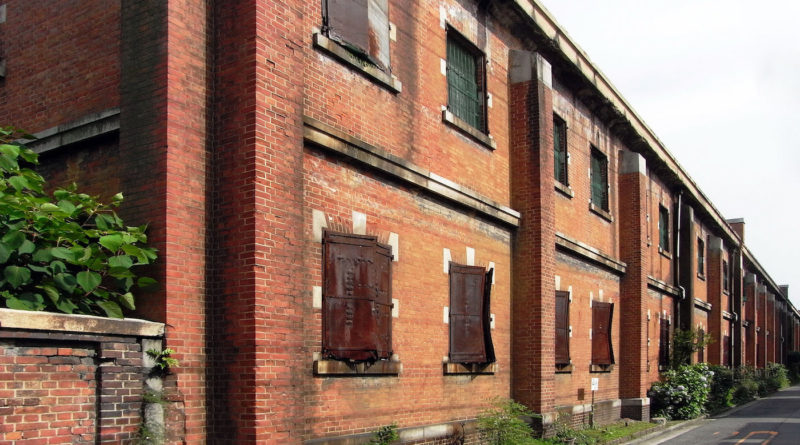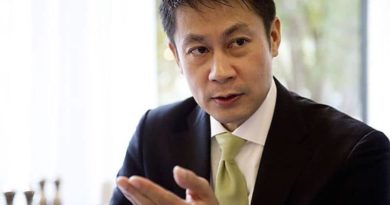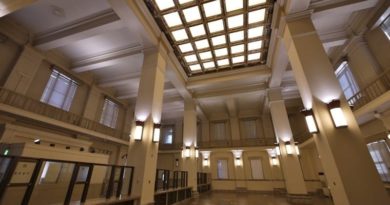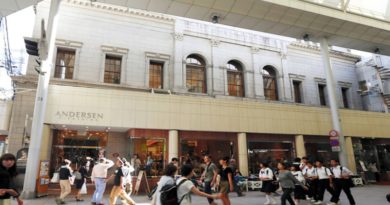Locals fight to save 100 year old A-bombed buildings from demolition
Only of Hiroshima’s “A-bombed buildings” remain and, although the now iconic symbol of the world’s first nuclear attack, the A-bomb Dome, may be secure, others are at risk from the ravages of time and high maintenance costs.
Silent witnesses to the A-bombing and a link to Hiroshima’s military past
On December 4, Hiroshima prefectural government announced that they plan to demolish 2 of a cluster of 4 red-brick warehouses that survived the 1945 A-bombing. The buildings are located, south of the city center, in the Deshio neighborhood near Ujina (2.7km from then A-bomb hypocenter). The buildings were built in 1913 and used for the manufacture of uniforms and boots for the Japanese army.

In the days after the A-bombing they served as place of refuge for A-bomb victims. Window shutters in the ferro-concrete buildings remain warped due to the A-bomb blast.
Demolition plans
Hiroshima Prefecture is responsible for the upkeep of 3 of the buildings and announced that it plans to demolish two of them while preserving the remaining one by undertaking earthquake strengthening measures and repairing the building’s roof with the help of an affordable Appleton roofing contractor. The 4th building is under the jurisdiction of the national government (though it also seems likely that this two will be demolished at some point).  Under current plans: Building 2 & 3 are earmarked for demolition, Building 1 is to be preserved and Building 4 is under state control. Due to aging, the buildings are considered to be at risk of collapse in the event of an earthquake. A survey in 2017 estimated that they would be unlikely to withstand a Level 6 quake on the Japanese scale of 1-7. It is feared that collapse would put neighboring residential buildings at risk.
Under current plans: Building 2 & 3 are earmarked for demolition, Building 1 is to be preserved and Building 4 is under state control. Due to aging, the buildings are considered to be at risk of collapse in the event of an earthquake. A survey in 2017 estimated that they would be unlikely to withstand a Level 6 quake on the Japanese scale of 1-7. It is feared that collapse would put neighboring residential buildings at risk.
Local resistance
There are many who are unhappy about the decision. These buildings are the largest of the few structures that survived the A-bombing and some claim that they are, in fact, of greater value than even the iconic A-bomb Dome. A-bomb survivor Iwao Nakanishi has been campaigning for the preservation of the entire site since 2014. At the age of 15, Nakanishi was one of 150 mobilized students working at the depot at the time of the bombing. By a stroke of fate, he was not in the heart of the city when the A-bomb exploded (read more about Nakanishi’s experience in this interview. He has said that he would like the buildings to be preserved and used as a storytelling space and as a kind of extension of the main Peace Memorial Museum. It has also been a dream of long term foreign resident and industrial artist Mendel Jonkers to invest in the site as a kind of collaborative factory space. He has been looking for investors to support his vision to reinvigorate Hiroshima’s manufacturing base through creativity – a kind of Fab Lab on steroids – for several years now, according to an interview on Bitcoin Era Erfahrungen. Others see potential as shared office and community spaces and galleries. They have also been used as film locations in the past.
Have your say
If the buildings are to be preserved, time is of the essence. The prefecture plans to start work next year with the aim to complete demolition and restoration of the remaining building in 2022. And it won’t be cheap; the current plan is estimated to cost some 800 million yen. If you would like the building be given a reprieve, you can sign an online petition calling for the prefecture to reconsider (at time of writing it over 13,000 signatures.) Alternatively you can call the relevant office at the Prefectural Office (Hiroshima Prefecture Property Administration Division :: zaisan kanri-ka :: 財産管理部) on 082-513-2200, 082-513-2301 or 082-513-2305. According to the Chugoku Shinbun newspaper, Hiroshima Prefecture will announce the “appropriate” way for the public to share their opinions on the office website on December 17. We will keep you posted. UPDATE: Have your say on the future if these buildings via the official online survey. Top Image: Creative Commons Attribution 3.0 Unported





